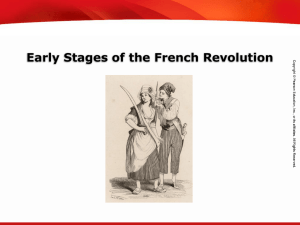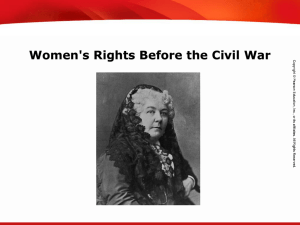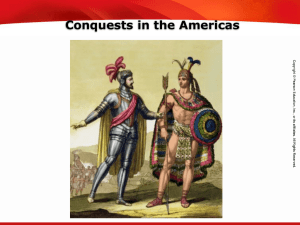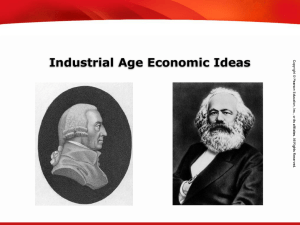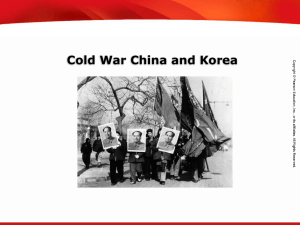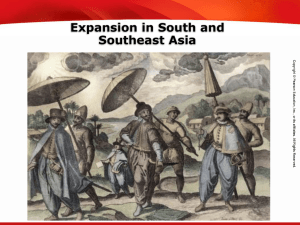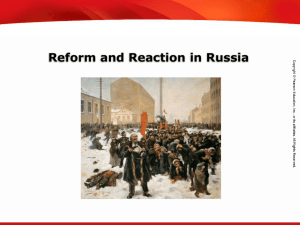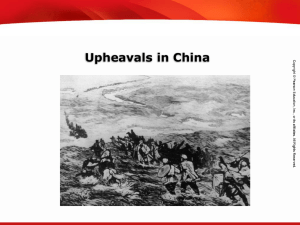The Middle Colonies
advertisement
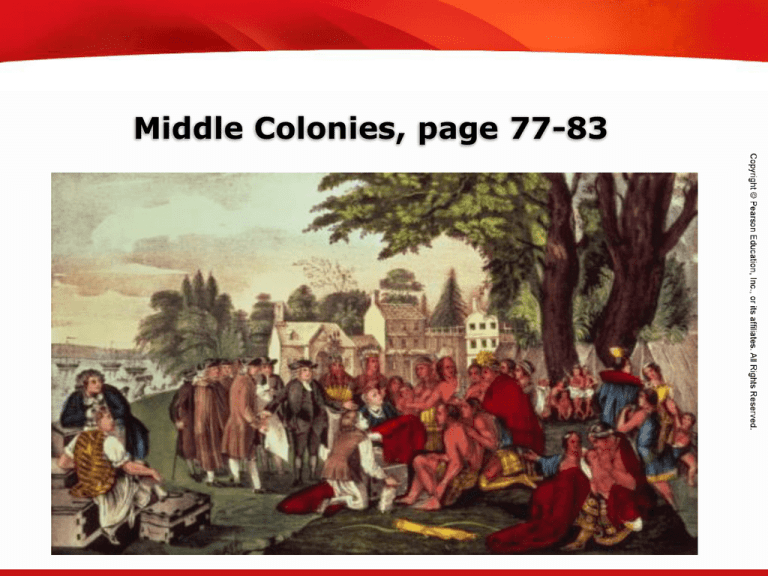
TEKS 8C: Calculate percent composition and empirical and molecular formulas. Middle Colonies, page 77-83 TEKS 8C: Calculate percent composition and empirical and molecular formulas. Middle Colonies TEKS 8C: Calculate percent composition and empirical and molecular formulas. TEKS 8C: Calculate percent composition and empirical and molecular formulas. Objectives 1. Describe the geography and climate of the Middle Colonies. 2. Identify the impact of key colonial figures on the economic, political, and social development of the colonies 3.Discuss the impact of colonial settlement on Native American populations. 4. Describe economic system of Middle colonies TEKS 8C: Calculate percent composition and empirical and molecular formulas. Terms and People • proprietary colony – a colony created by a grant of land from a monarch to an individual or family • royal colony – a colony controlled directly by the English king • William Penn – a Quaker leader who established the Pennsylvania colony and its capital, Philadelphia • backcountry – a frontier region extending through several colonies, from Pennsylvania to Georgia TEKS 8C: Calculate percent composition and empirical and molecular formulas. How did the diverse Middle Colonies develop and thrive? Colonists settled in the Middle Colonies for freedom of religion or to profit from trade, farming, or other occupations. Factors such as fertile soil, manufacturing, and social equality promoted the colonies’ prosperity. TEKS 8C: Calculate percent composition and empirical and molecular formulas. TEKS 8C: Calculate percent composition and empirical and molecular formulas. TEKS 8C: Calculate percent composition and empirical and molecular formulas. Describe the climate & geography of Middle Colonies. Geography of the Middle Colonies Location • New York, Pennsylvania, New Jersey, and Delaware (in order from largest to smallest) were the Middle Colonies. Landforms • Much of the Middle Colonies is lowlands. • The Hudson and Delaware rivers are important waterways in the region. • The soil is fertile and well-suited for crops like wheat, fruits, and vegetables. Climate • The climate is warmer, with a longer growing season, than the New England climate. TEKS 8C: Calculate percent composition and empirical and molecular formulas. Middle Colonies HISTORY How it started. TEKS 8C: Calculate percent composition and empirical and molecular formulas. TEKS 8C: Calculate percent composition and empirical and molecular formulas. NEW YORK New York began as the Dutch colony of New Netherland, which owed its economic success to trade with Native Americans and British colonies. Population of New Netherland However, New Netherland had only a small Dutch population, and its other colonists were often hostile to Dutch rule. Swedish Dutch French Portuguese English TEKS 8C: Calculate percent composition and empirical and molecular formulas. England Holland England and Holland had tense relations because: • New Netherland separated England’s northern colonies from its more southern colonies. • New Netherland traded with English colonies, which violated Britain’s mercantile laws. TEKS 8C: Calculate percent composition and empirical and molecular formulas. In 1664, England’s King Charles II told his brother James, Duke of York, that he could have New Netherland if he conquered it. With the help of a few warships, James did just that. ___________________ New Netherland New York James renamed the colony New York and its capital New York City, and it became a royal colony in 1685. TEKS 8C: Calculate percent composition and empirical and molecular formulas. New York In 1665, part of southern New York split off and formed a new colony, New Jersey. New Jersey At first, New Jersey was a proprietary colony, but in 1702, it received a new charter as a royal colony. TEKS 8C: Calculate percent composition and empirical and molecular formulas. 2. Identify the impact of key colonial figures on the economic, political, and social development of the colonies: William Penn TEKS 8C: Calculate percent composition and empirical and molecular formulas. PENNSYLVANIA The Quakers emerged as a new religious group in England during the 1640s and 1650s. The Quakers believed: Slavery • People do not need ministers because everyone has a direct link with God. • All people are equal in God’s eyes; therefore, women are equal to men in spiritual matters, and slavery is wrong. TEKS 8C: Calculate percent composition and empirical and molecular formulas. Quaker leader William Penn wanted to find a place where Quakers could live free of persecution. He used his connections to get a charter from the king for a new colony in North America. Pennsylvania charter Penn arrived in the Pennsylvania colony in 1682 and established its capital, Philadelphia. TEKS 8C: Calculate percent composition and empirical and molecular formulas. Home Countries of Pennsylvania Settlers: Penn considered his colony to be a “holy experiment” of people from different faiths living together in peace. • England • Scotland • Wales • Ireland • Germany • Holland • Switzerland In 1682, Penn wrote a document that granted Pennsylvania an elected assembly and provided for freedom of religion. TEKS 8C: Calculate percent composition and empirical and molecular formulas. 3. Discuss the impact of colonial settlement on Native American populations. TEKS 8C: Calculate percent composition and empirical and molecular formulas. Penn tried to deal with Native Americans fairly; he did not allow colonists to settle on land until Native Americans sold it to them. During Penn’s lifetime, relations between Native Americans and colonists were much better in Pennsylvania than they were in other colonies. TEKS 8C: Calculate percent composition and empirical and molecular formulas. 4. Describe the economic system of the Middle Colonies: Manufacturers= a company that makes goods for sale. Artisans = a worker in a skilled trade, especially one that involves making things by hand. TEKS 8C: Calculate percent composition and empirical and molecular formulas. By the early 1700s, more than 20,000 colonists lived in Pennsylvania. Its wheat farms were productive, and Pennsylvania was called America’s breadbasket. TEKS 8C: Calculate percent composition and empirical and molecular formulas. Manufacturing was just beginning in the Middle Colonies during the 1700s. Manufacturers produced iron, flour, and pepper. Town artisans worked as weavers, masons (builder and worker in stones) , coopers (barrel-makers), and in many other trades. TEKS 8C: Calculate percent composition and empirical and molecular formulas. By the middle of the 1700s, many settlers were pushing south and west along the backcountry, or frontier, between Pennsylvania and Georgia. The backcountry settlers that traveled along the Great Wagon Road often fought with Native Americans. Backcountry Settlers Native Americans TEKS 8C: Calculate percent composition and empirical and molecular formulas. Many of the people who settled in the backcountry were not English. Some were Scotch-Irish, and others were German. TEKS 8C: Calculate percent composition and empirical and molecular formulas. By 1750, non-English immigrants had made the Middle Colonies the most diverse part of English North America. Philadelphia and New York had become the largest cities and busiest ports in the colonies. All of the colonies had thriving economies.
